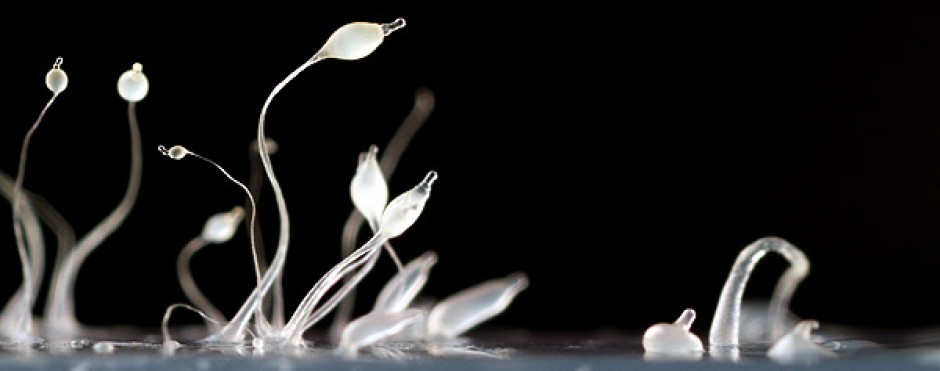Intro
Welcome to the Larochelle Lab. Our lab group, led by Professor Denis Larochelle, explores the components, interactions, and environment optimal for effective cytokinesis in Dictyostelium discoideum. This site provides some background on our topic, briefs on the current people and projects in the group, and news about “Dicty” and the lab, in addition to resources that our team finds useful. Explore, enjoy, and visit often for new posts and pictures.
Background
Cytokinesis, the final step in cell division, begins when the newly duplicated chromosomes are segregated to opposite ends of the cell, and culminates with the formation of two new cells, each with a single nucleus (Guertin et al., 2002; Glotzer, 2005). In most animal cells, and many lower eukaryotes, cytokinesis proceeds through a similar series of steps including the decision of where and when to divide to the final step of abscission. Underlying these stages of cytokinesis is the fact that these events must somehow be coordinated with those of the nuclear cycle so that each resulting daughter cell ends up with one and only one nucleus. This strict spatial and temporal relationship between cell division and nuclear division points to a very tightly regulated system. At the same time, it is the transient nature of the process that has made it difficult to study in the past. Although much has been learned regarding the regulation of cytokinesis, there remain many unanswered questions. We are taking advantage of the molecular tractability of Dictyostelium discoideum to shed light on this fundamental yet incompletely understood process.
Dictyostelium has enjoyed a long history as a research organism and is listed as one of the preferred model organisms by the NIH. Furthermore, it has proven to be a very useful model organism for the study of cytokinesis ((Mabuchi and Okuno, 1977; Kiehart et al., 1982; Robinson et al., 2002). The importance of myosin in cytokinesis had been previously demonstrated (Mabuchi and Okuno, 1977; Kiehart et al., 1982;) but it was the generation of myosin null cells in Dictyostelium that provided the clearest experimental evidence (De Lozanne and Spudich, 1987). Surprisingly, Dictyostelium myosin null cells were able to propagate normally when grown as an attached culture but, due to a defect in cytokinesis, became large and multinucleated when grown as a suspension culture.
What allowed the myosin null cells to propagate as an attached culture is the ability to divide through means other than conventional cytokinesis. In fact, four modes of cytokinesis (A,B,C, and D) have since been described for Dictyostelium (Uyeda et al., 2004). We have exploited these alternative mechanisms of cell division in the amoeboid cells of Dictyostelium to search for genes essential for cytokinesis. This screen was based on the phenotype of myosin II null cells which can propagate as an attached culture but not when transferred to suspension culture. Such a phenotype is consistent with cells that are defective in conventional cytokinesis (cytokinesis A). In most organisms it would not be possible to propagate these cells. However, because this phenotype is only conditionally lethal (i.e. when the cells are grown as a suspension culture), we are able to propagate such cultures
Our own discovery of the small GTP-binding protein racE, and its requirement for proper cytokinesis in Dictyostelium (Larochelle et al., 1996; Larochelle et al., 1997) served as a paradigm in our search for other molecules that are also required for cytokinesis (LvsA, (Kwak et al., 1999); Pats1, (Abysalh et al., 2003)). The devised screen, based on the myosin II null phenotype, allowed us to isolate genes such as racE by growing parallel cultures of cells as attached and suspension cultures and looking for cell lines that would only propagate as attached cultures. Because myosin II is an essential component of cytokinesis in many eukaryotic cells (including human cells), we are confident that the importance of genes identified in this screen will extend beyond Dictyostelium to improve our understanding of cytokinesis in general. More recently, we have turned our attention to additional targets in the hopes of further unraveling the mysteries of cytokinesis.
